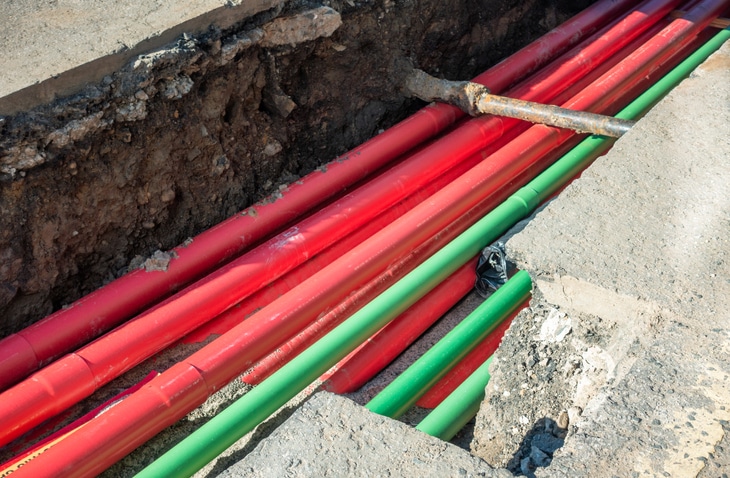The Difference Between Utility Construction and Pipeline Construction Techniques
The concept of laying underground utility lines has been around for quite a while, especially the gas and water-based lines. This is because LNG and sewage lines above the surface present a potential safety and hygienic hazard, while the risk of exposure for these underground lines gets reduced significantly.
Several construction techniques are used to lay utility lines, and while they may seem extrinsically the same, they couldn’t be more different from each other. In this article, we will look at two such techniques; underground utility construction and pipeline construction.
Underground Utility Construction
Underground utility contractors install and repair sewer, gas, and water lines. They are also hired to lay fiber optics in many instances, but there are other, better techniques for this (such as microtrenching). Underground utility construction includes the whole process of excavating the land and digging trenches for pipes, installing temporary pipes to prepare the land for permanent lines, and addressing any issues that may occur during the process itself.
As a utility construction contractor, it is also our responsibility to procure and construct any part or structure needed for the pipelines. For example, for underground electrical lines, this may involve setting up junction boxes pole supports.
These contractors and their labor is usually exposed to hazardous material, such as gas pipes and exposed sewage.
Common techniques include:
- Finding existing underground utilities
- Construction and maintenance of underground utility infrastructure
- Welding
- Microtrenching
- Fabrication
- Building utility boxes
- Excavation
- Utility installation
- Fiber Optic installation
- Hydroexcavation
Pipeline Construction
Pipeline constructors, on the other hand, are dedicated solely to digging the pipeline path. This job involves using heavy tools and equipment, and the goal is to install pipelines or repair them. Welding pipes, laying them into place, stress testing, and other essential roles are also performed under this banner.
These pipes range from 2 inches to 24 inches and may be used for oil, gas, sewage, or irrigation.
The primary difference is that where utility construction also involves building infrastructure, pipeline construction only involves laying concrete to support the pipes.
Common techniques include:
- Fast fusion
- Plowing
- Directional drilling
Americom’s technology and utility services offer a wide range of pipeline and utility construction options for oil, gas, water, sewage, and irrigation needs all across the US. If you want to learn more about our services or are ready to get a quote, get in contact with us today!



